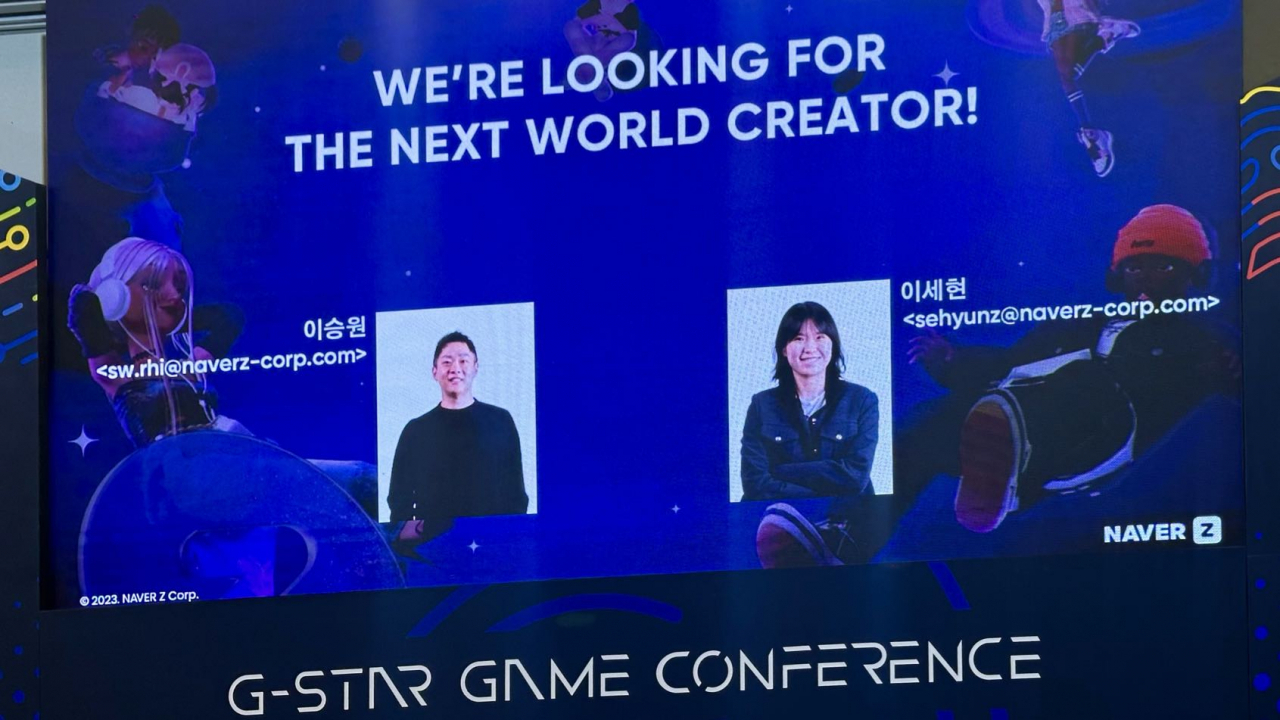Zepeto metaverse plans to support Apple Vision Pro
By Moon Joon-hyunPublished : Nov. 19, 2023 - 15:11

BUSAN -- Naver Z, the metaverse subsidiary of South Korean internet giant Naver, is planning a version of Zepeto for Apple's first wearable headset device, embracing the US tech behemoth's concept of spatial computing.
“We are preparing to showcase something special for headsets such as Apple's Vision Pro," Lee Seung-won, Nazer Z's developer relations director told The Korea Herald during a marketing talk at G-Star Game Conference 2023, part of the G-Star gaming exhibition held last week in Busan.
This development could be a major leap for Zepeto, already a leader in the 3D avatar social gaming and interaction sphere, as it ventures beyond its current success, which does not depend on virtual reality technology as of yet.
"Yes, I know, the term spatial computing wasn’t much in our vocabulary before," he said.
Earlier this June, Apple introduced Vision Pro as a spatial computing device that blends digital content with the physical world, creating a canvas for apps that can be controlled by eye, hand and voice input.
Zepeto's vibrant growth and self-sufficiency could position Zepeto advantageously for the transition to spatial computing.
Distinguished as a successful example of the much-discussed concept of the metaverse alongside platforms like Roblox, Zepeto has not strictly defined itself within the confines of a traditional metaverse or gaming platform. Instead, it has tried to offer a virtual space where users can interact, create and express themselves using 3D avatars.
“Zepeto thrives by being a versatile space that adapts and grows with our users, enabling them to create their unique worlds,” Lee said.
With a user base exceeding 400 million recently, predominantly from Gen Z and Gen Alpha, Zepeto has also fostered a vibrant creator economy. This ecosystem is bolstered by Zepeto Studio, where users can design, create and sell items such as fashion goods.
The platform's economic model supports its creators lucratively, as illustrated by the successes of Zepeto influencers like Monica Ruiz and Renji, both of whom have achieved significant earnings through item sales on Zepeto.
Naver Z developer relations manager Zepeto Lee Se-hyun said that the creators have sold and earned over 1.6 billion virtual fashion items so far. The platform's virtual currency, gems, enables creators to convert their digital earnings into real money.
Despite a decline in interest in the metaverse, South Korean companies remain invested in this domain. Notably, Krafton has partnered with Naver Z, on the Migaloo metaverse project, while Com2uS is developing its all-in-one metaverse service with Naver Z, both set to launch by the end of this year.
Lee Se-hyun emphasized the role of content creation in driving Zepeto's economic ecosystem. "A sustainable metaverse platform thrives by fostering an environment where it can grow through proactive user engagement, content generation and even an economy on its own," she said.



















![[Today’s K-pop] Treasure to publish magazine for debut anniversary](http://res.heraldm.com/phpwas/restmb_idxmake.php?idx=642&simg=/content/image/2024/07/26/20240726050551_0.jpg&u=)